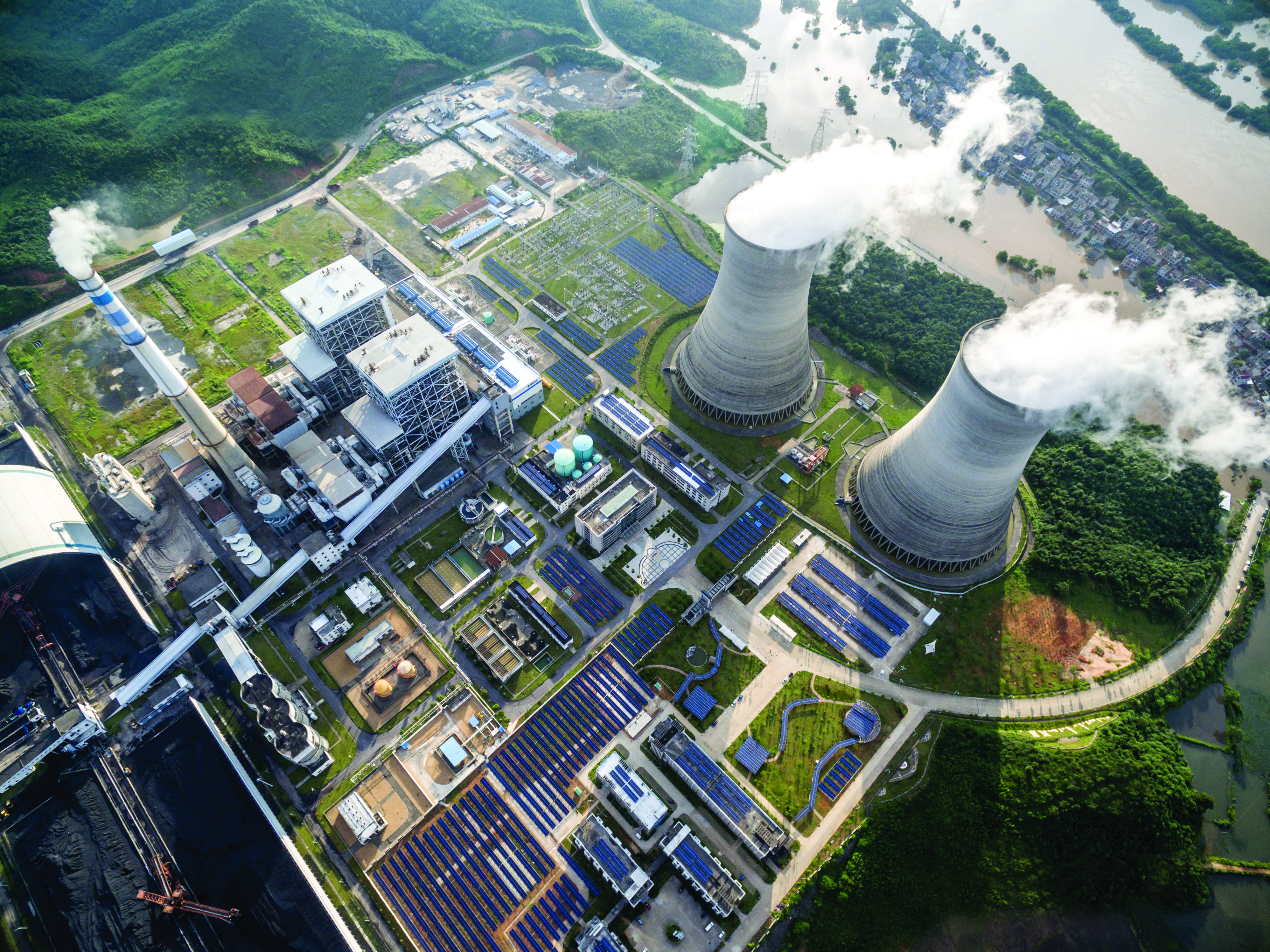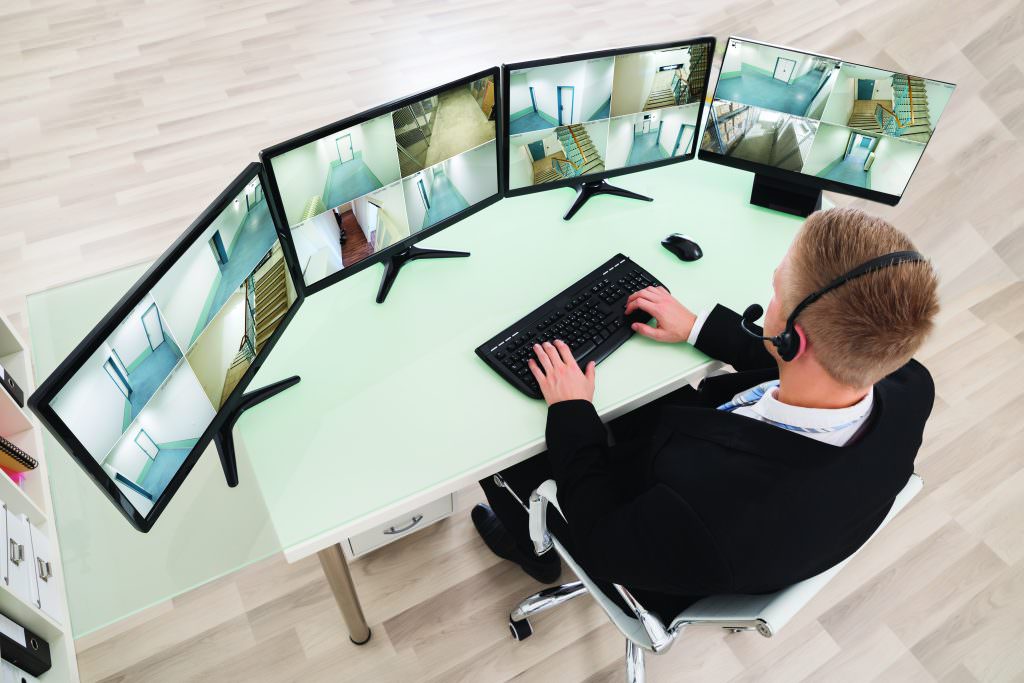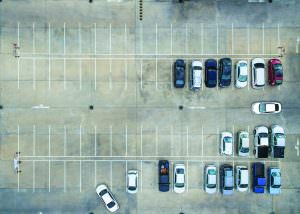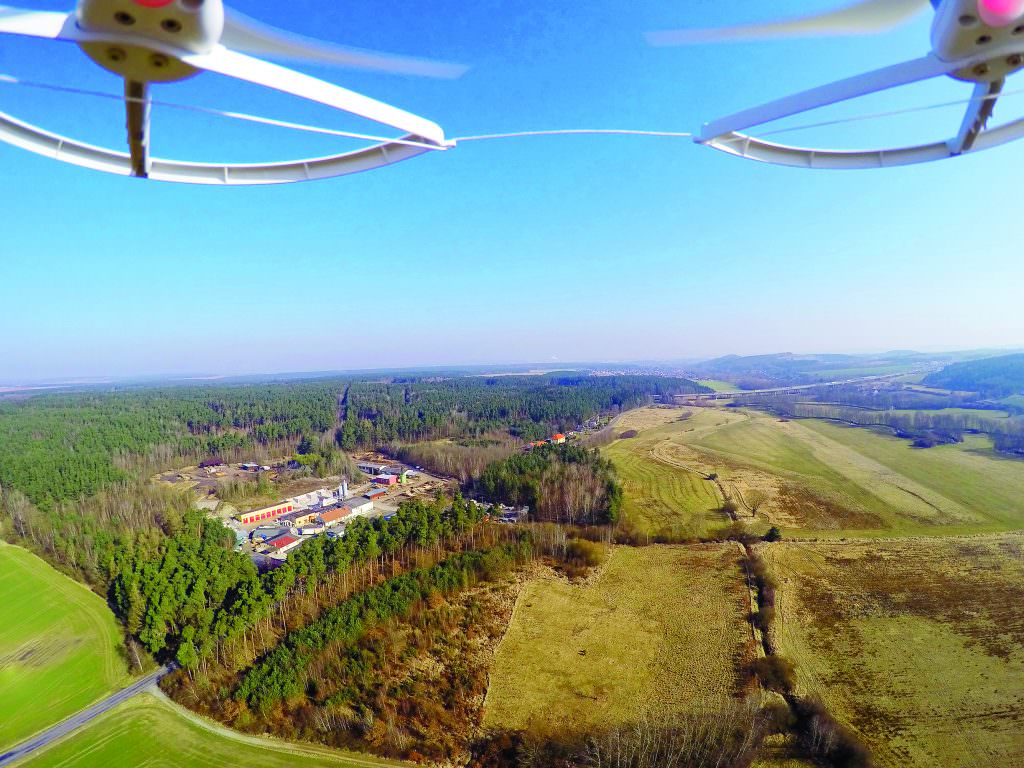Up in the Air

Drones powered by artificial intelligence could transform security

Cary Savas, Nightingale Security
Drones are powerful. They are changing our existence. They are here to stay.
This article examines a drone application with the potential to have an extraordinary impact on the physical security industry. It is called robotic aerial security (RAS).
What Is Robotic Aerial Security?
RAS is sometimes called “drone security,” but, in reality, it is much more than that. RAS is a combination of three components – drones, base stations and software – working together to provide autonomous, 24/7 physical security using real-time aerial surveillance cameras and data gathering sensors.
The first component, drones, are specialized, commercial unmanned aerial vehicles (UAVs) designed to carry payloads that are vital to security missions. The drones have one or more sensors, such as for RGB, infrared, thermal, LIDAR and even hazardous materials. New sensors are being developed and deployed, making the drones, and the overall RAS system, more powerful and efficient.
The next component, base stations, provide shelter and recharge the drones. These base stations are much more than just a landing pad. Inside the industrial, weather-proof housing is a charging component and a networked computer to help manage the autonomous operation.
The last and most important component of an autonomous RAS system is the software. Anybody can make a drone (well, lots of people do, at least), but having artificial intelligence software to enable the autonomous operation of a fleet of drones is of paramount importance when deploying a RAS system in a commercial setting. This sophisticated software is a command and communications hub, the brains of the system.
Having artificial intelligence software to enable the autonomous operation of a fleet of drones is of paramount importance when deploying a RAS system in a commercial setting. This sophisticated software is a command and communications hub, the brains of the system.

How Will RAS Be Used?
Generally speaking, RAS is deployed in three ways, but the first two are the most common.
Autonomous Rapid Response
Rapid response to an alarm event is a goal of any security organization, but it is often difficult to achieve. This is where RAS can bring significant and measurable benefits. The RAS software is integrated into the existing security system and alarm panels, so it is immediately notified when there is an alarm event. At that point, the RAS system autonomously dispatches a drone to the site of the event and the drone streams live video back to the security team.
In this deployment scenario, RAS is an autonomous rapid response mechanism that is the perfect complement to a system that has multiple alarms and sensors. A RAS system can maximize the value of these alarms and sensors by using them as triggers to autonomously dispatch drones. The benefits of this integration are transformative in terms of how quickly, efficiently and safely security personnel are able to respond to alarm events.
Alarms go off all the time. And while most alarm activations turn out to be false, each one represents a potential threat that needs to be investigated with a sense of urgency. In large corporate facilities, quickly deploying a guard to an alarm location is challenging, and sometimes a lack of camera coverage prevents security staff from seeing what is going on. That is where a RAS system can deliver value. A drone can deploy autonomously, cover long distances quickly and send a live video stream of a situation to the whole security staff. This provides an unprecedented level of situational awareness – an invaluable asset when confronting a potential threat.
A drone can deploy autonomously, cover long distances quickly and send a live video stream of a situation to the whole security staff. This provides an unprecedented level of situational awareness.
Scheduled Autonomous Patrols
Guard patrols are an important part of most security operations and doing it well and cost efficiently can be challenging. But robots are perfectly suited for autonomously patrolling large facilities. With a RAS system, a user can schedule precise patrol missions around a perimeter and throughout a facility and have them repeated at set times, autonomously. He or she can establish several types of missions, specifying the day, time, path, speed, altitude, hover duration, camera/sensor direction and other variables. Once a mission is set and saved, no additional human involvement is required for a RAS system to carry it out. It happens like clockwork. Actually, it is clockwork because the system does not switch off. It is on duty and ready to go 24/7.
One of the ways this is made possible is through redundancy. In military terms, three is two, two is one, and one is none. In short, without redundancy, you have nothing. So an effective RAS deployment will have built-in redundancy. For example, in the event that a drone on patrol is running low on battery power, another drone can autonomously dispatch, relieve the first one and complete the mission. The video feed switches to the replacement drone with no interruption. In the meantime, the first drone has returned to the base station to recharge so it can redeploy when needed.
Manual Surveillance Missions
If there is a major event, such as a fire, oil spill or chemical leak, a user can manually dispatch a drone to any location within the facility. It is during these impromptu, dynamically changing events that personnel most need situational awareness to provide insight into where, how and when to deploy resources. Or, in extreme cases, when to stay away. And while a manual surveillance mission is not an everyday deployment scenario, there are instances when it is an invaluable capability. This is a situation where it is better to have something and not need it than to need it and not have it.
What Is RAS Software?
RAS software enables the autonomous operations and the deployment scenarios described above. That said, there are other transformative capabilities powered by software that deserve more attention.
For starters, unlike standard surveillance (piecing together human intelligence, ground-based cameras and witness statements), a RAS system can broadcast everything in real time to everyone on the security staff. It is a communications hub that enables the entire staff to view live video feeds from multiple drones, simultaneously. A guard can watch over his local facility, a regional manager can see locations across multiple states, and a chief security officer can view video feeds from around the world. This new, powerful communications capability will transform how security personnel evaluate and respond to events.
Another important software-driven capability is the command and control function that the system provides from anywhere in the world. With access to the Internet and the proper user permissions, security staff can configure mission details from anywhere.
 Last, but not least, is the artificial intelligence enabled by the RAS software. Drones are powerful data capturing devices, and the RAS software is a powerful data analysis tool. Imagine drones from a RAS system have patrolled a facility over and over for months. These patrols have gathered reams of data about the facility and the AI software has learned what “normal” looks like (where is the path of the perimeter fence, how many cars parked in the lot at night, where do delivery trucks go, which areas are off-limits to cars, personnel, etc.). This definition of “normal” allows the system to identify abnormalities and alert staff when something warrants a more detailed inspection. This is powerful because it makes security personnel more effectively.
Last, but not least, is the artificial intelligence enabled by the RAS software. Drones are powerful data capturing devices, and the RAS software is a powerful data analysis tool. Imagine drones from a RAS system have patrolled a facility over and over for months. These patrols have gathered reams of data about the facility and the AI software has learned what “normal” looks like (where is the path of the perimeter fence, how many cars parked in the lot at night, where do delivery trucks go, which areas are off-limits to cars, personnel, etc.). This definition of “normal” allows the system to identify abnormalities and alert staff when something warrants a more detailed inspection. This is powerful because it makes security personnel more effectively.
Humans are still (for the time being) better than AI at making complex, real-time decisions, but AI is great at identifying differences in the status quo.
One might say that humans, AI and RAS systems are made for each other. As AI software improves, the RAS system will “learn” even more about the facilities being patrolled and become more valuable to the security staff.
Will RAS Affect Manned Security?
Let’s look at some market conditions that could lead to RAS systems bringing about fundamental, industry-wide changes.
- Contract security guards represent 50 percent of the physical security market, so anything that affects that segment can move the market.
- Security guards have limited performance capabilities. For example, it is difficult for guards to quickly cover terrain at large facilities or remote areas. A rapid response just is not possible at most big facilities. There are also other performance inhibitors, such as sick days, vacation days, holidays, fatigue, human error, malfeasance, etc. But robots do not take holidays. What would they do if they did? Visit the in-laws? Go to the beach?
- High turnover is a systemic and costly challenge facing the security guard market. The annual turnover rate is estimated to be 100 percent, and in some cases, it is as high as 400 percent. As a comparison, the turnover rate for most jobs is 15 percent. The high turnover rate for guards affects staff continuity, performance, and the bottom line. In fact, the costs for interviewing, training, and onboarding new employees can range from 30 percent to 400 percent of the replaced employee’s salary. This is a painful, recurring expense for security staffing companies.
- The average annual cost for a contract security guard is $52,000 – $25 per hour and 2,080 hours per year. In this equation, the guards get paid $10-15 per hour, so they are not motivated financially. All in all, it is an expensive situation for end users and an unmotivating job for guards.
Given these market conditions, a RAS system could truly bring about change. With such a system, companies can enhance their existing security posture and reduce the manpower they require. In short, they can do more, and do it more reliably, for less money.
Facilities with large perimeters or remote operations are especially well-suited for a RAS system. This covers many industries, including oil and gas, critical infrastructure, solar farms, power plants, manufacturing, data centers, chemical plants, agriculture, and railyards, among many others. Regardless of the industry, if there is a large perimeter to patrol, a RAS system can do it better, faster and at a lower cost than traditional solutions.
Empowering Security Guards
With a RAS system, security guards can get eyes in the sky over a large corporate facility, quickly cover rough terrain, investigate alarms more efficiently, get and maintain situational awareness during alarm events and emergency situations, safely track intruders and potential threats, and view real-time video as a team.
And that’s just for starters. As RAS technology improves, so will the capabilities of security guards.
Force Multiplier
When security guards see something suspicious, they call into the central command and verbally describe the situation. Conversely, a drone from a RAS system that identifies something suspicious broadcasts continuous, real-time video of the situation to the entire security staff. That is much more powerful than a phone call or radio transmission. Now imagine a facility with one security guard at a central command station controlling a RAS system that has three drones. That one guard can patrol and cover the same territory as three guards and do so more capably and at a lower cost.
Superior Mobility
The concept of using human guards for rapid response at a 1,000-acre facility just is not practical. Drones, however, cover difficult terrain better and faster than human guards. And with performance specifications like 0-60 mph in a little over 4 seconds, a RAS system is an ideal rapid response platform.

Always on Duty
Drones can patrol facilities, perimeters and at-risk areas every hour of every day. They happily work holidays without expecting time-and-a-half.
Large Coverage Area
A drone can cover a linear distance of 5 miles per mission. It is almost impossible for a pan-tilt-zoom camera with good zoom to cover the same distance, even assuming there are no trees, buildings or other obstructions in the way.
Visible Deterrent
Drones can respond to an incident or an alarm event rapidly and serve as a visible deterrent once on scene, without exposing human guards to harm. In addition, simply posting perimeter signs – “Patrolled by Robotic Aerial Security” – can go a long way toward preventing an intrusion.
Cost Effective
Buying, installing, operating and maintaining cameras and sensors for a large perimeter can be expensive. Typical areas of operation for a large corporate facility can range from hundreds of acres to tens of square miles. The costs to outfit a large perimeter with security cameras and sensors can reach millions of dollars, but a RAS system can be deployed for a fraction of that amount.
Easy to Deploy
Buying, owning and maintaining complex hardware and software is a major undertaking. It is a significant capital expenditure that requires regular maintenance and is destined for technological obsolescence in the near future. That is not true for RAS systems, though, because they are available via a subscription model – Robots as a Service (RaaS). Customers do not have to buy, own or maintain anything. A monthly fee and annual contract provides the hardware, software, maintenance and a service agreement. The customer gets hardware and software that is maintained and upgraded as needed by the service provider, and the service provider gets a stable revenue stream.
There are, then, many reasons why robotic aerial security is poised to fundamentally transform the physical security industry. This powerful, new technology offers tangible, immediate benefits for corporate physical security operations, and it is here to stay.
Cary Savas (cary.savas@nightingalesecurity.com) is vice president, marketing, at Nightingale Security (www.nightingalesecurity.com)
